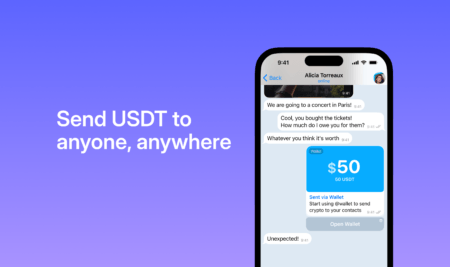Zilliqa announced on Wednesday (July 31) that it is integrating with Chainlink.
What Is Zilliqa?
Zilliqa is “a scalable, secure public blockchain platform.” More importantly, it is one of the first public blockchain platforms that has already implemented sharding; on its testnet, Zilliqa has managed to achieve a throughput of over 2,828 transactions per second (TPS).
This is not Visa-level speed (around 24,000 TPS), but it is much faster than, say, Ethereum (20 TPS), Dash (48 TPS), Litecoin (56 TPS), and Bitcoin Cash (on average, up to 61 transactions per second). Zilliqa says that this kind of speed “enables new use cases that have high-throughput demands that were not previously possible on legacy public blockchain platforms.”
What is interesting about Zilliqa’s scalability is that “the throughput scales almost linearly as the number of nodes scales, ensuring that Zilliqa’s capacity can continue to grow to meet demand.” This is known as linear scaling.
In case you are wondering where the name Zilliqa comes from, here is how “The Not-So-Short ZILLIQA Technical FAQ” explains it:
“ZILLIQA is a play on silica. Just as silicon powers the computing industry, the team hopes ZILLIQA will power the next generation of high-throughput applications.”
Zilliqa uses Proof of Work (PoW) for “miner verification to prevent Sybil attacks” and Practical Byzantine Fault Tolerance (pBFT) for consensus. This gives Zilliqa “a far lower energy footprint” than legacy proof-of-work blockchains (such as Bitcoin and Litecoin). The Zilliqa team says that it might one day “replace PoW with a stake-based mechanism for Sybil resistance,” but it would “still continue using pBFT as the underlying consensus protocol.”
On Jan 31, Zilliqa announced that its mainnet had launched.
On Monday (June 10), Amrit Kumar, President and Chief Scientific Officer of blockchain startup Zilliqa, announced that smart contract functionality had gone live on the Zilliqa mainnet and explained why this was a big deal “not just for Zilliqa, but for the blockchain infrastructure industry as a whole.”
What Is Chainlink?
Here is the problem that Chainlink says it is trying to solve: “smart contracts can’t access data on their own”. The reason is that the blockchains that power smart contracts “cannot support native communication with external systems” due to “their underlying consensus protocols.”
If in this context we define an “oracle” as a node that “provides connectivity to the outside world,” developers of smart contracts could use centralized oracles, unfortunately, this would create “the same problem which smart contracts themselves seek to avoid,” i.e. “a single point of failure.” If that single node fail fails, the smart control fails.
The solution, according to Chainlink, is “a highly reliable decentralized oracle network” as opposed to using “existing oracles”, which are “centralized services.”
Chainlink connects smart contracts to the inputs and outputs they need by allowing them to “connect to any API” and “send payments anywhere”.
Although the first implementation of Chainlink is for the Ethereum blockchain, its white paper says that intention is “to support all leading smart contract networks for both off-chain and cross-chain interactions.”
On 30 May 2019, Chainlink announced that its decentralized oracles had gone live on the Ethereum mainnet.
Zilliqa’s Integration With Chainlink
According to a press release shared with CryptoGlobe, Zilliqa is integrating with Chainlink “to enable an ecosystem of data-driven smart contracts,” and says that this collaboration “will allow Zilliqa smart contracts to easily retrieve and query external data feeds through a custom Chainlink adapter, enabling access to real-time information such as exchange rates, market prices, voting results, weather forecasts, derived from other public blockchains and cloud service providers.”
The idea is that Chainlink “will be able to source data from multiple providers and redirect them to the Zilliqa blockchain, effectively enriching the Zilliqa smart contract ecosystem, while ensuring its robustness and security.” Chainlink’s decentralized oracle approach means “no single point of failure.”
Zilliqa’s President and Chief Scientific Officer had this to say:
With a collective vision to empower developers with technologically-sound infrastructures and resources, we believe that this collaboration with Chainlink will enable us to deliver an exciting value proposition to our developer community and our end users. As we continue to explore more solutions in the realm of decentralised finance, access to secure and reliable price feeds will be integral to the growing diversity of the Zilliqa ecosystem. We look forward to seeing exciting new applications on our network such as decentralised exchanges, trading platforms, and many other crypto-integrated financial services.
Apparently, the Zilliqa and Chainlink teams have been working together “to ensure the successful querying of the Zilliqa blockchain.” The Chainlink adapter “will also help bolster the platform’s trustlessness and scalability, as no single individual will be responsible for manually updating data feeds.” Furthermore, “private keys to smart contracts will be managed in the external adapter rather than a blockchain node, allowing for greater security throughout the system’s architecture.”
Chainlink’s Global Head of Business Development, Dan Kochis, stated:
Our recent mainnet launch showcased our capabilities in equipping Ethereum smart contracts with the ability to query market prices. After months of collaboration with the Zilliqa team, we are excited to expand our off-chain data query capabilities to yet another innovative trailblazer in the global blockchain ecosystem. Data driven by design, the integration of our services with a platform that champions greater standards in not only scalability and decentralisation, but also security, will help to catalyse a new generation of decentralised finance applications built for enterprise use.
Effect of This Announcement on the LINK Price
According to CryptoCompare, at press time (09:14 UTC), LINK is trading at $2.231, up just over 10% in the past 24-hour period:
Featured Image Credit: Photo via Pixabay.com










